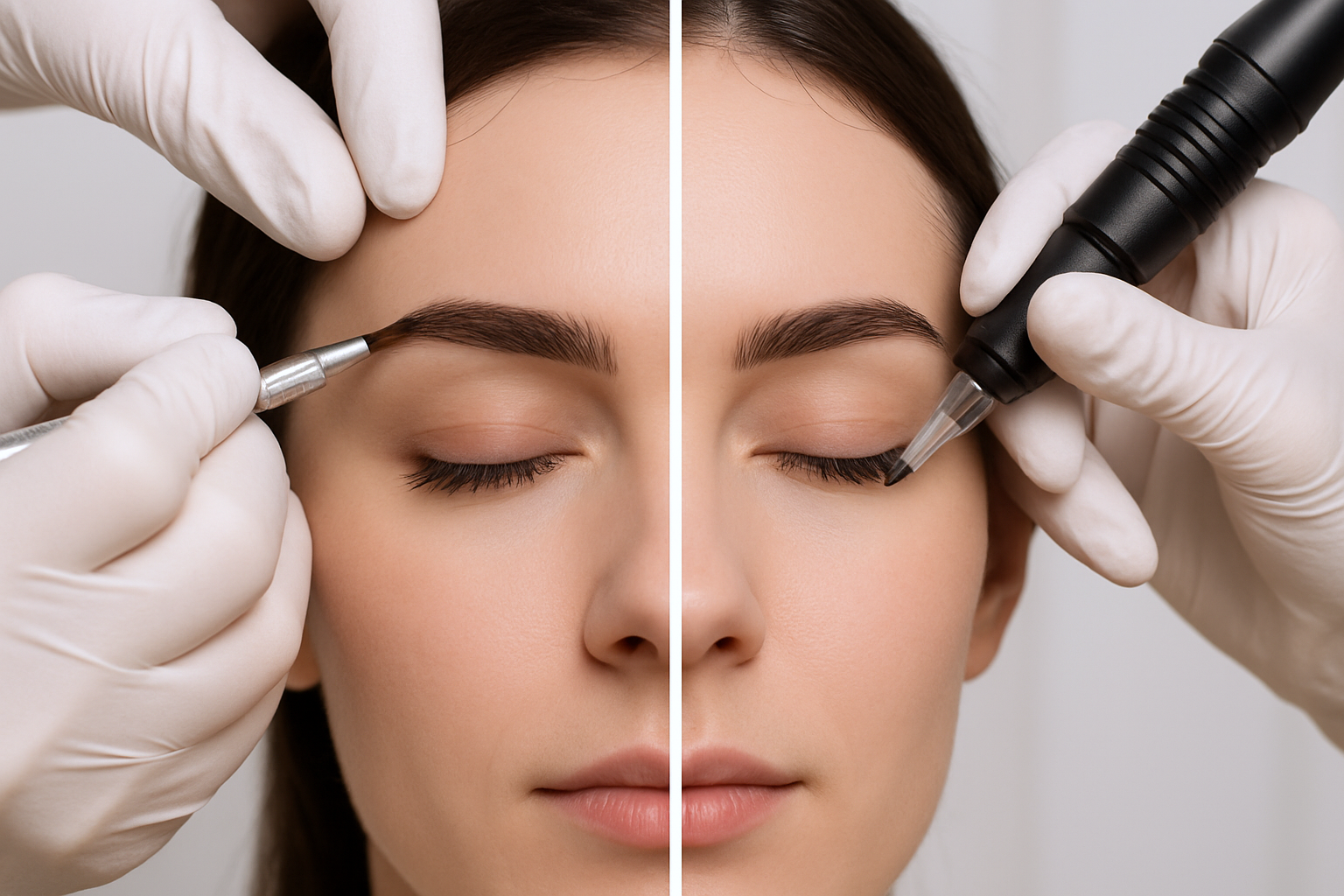Professionals in Cosmetic Tattooing are transitioning from Microblading to Machine techniques. This advancement is revolutionising the industry, offering artists and clients unmatched precision, versatility, and long-lasting results. Stay ahead in the competitive Cosmetic Tattooing industry by ensuring that you have mastered both.
From Microblading to Machine Techniques
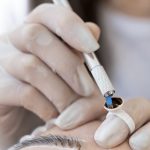
Microblading is the original brow-enhancing technique that utilises a small blade to etch hair-like strokes into the skin. As you can achieve a look that’s soft and natural, this is a great method for beginners. However, it’s only suitable for eyebrows and is most effective on dry skin.
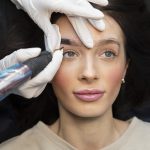
Enter the Machine method (Micropigmentation), which uses a digital device and fine needles to implant pigments with precision and versatility. This approach is continually gaining popularity for its adaptability and superior results.
Advantages of Switching from Manual to Machine
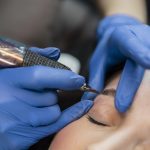
Switching from Microblading to Machine techniques offers several benefits:
- Longer-lasting results: Machine work deposits pigment deeper and more evenly, making brows last longer, especially on oily or sensitive skin.
- Flexibility: Machines create different styles – shading, Ombré, and hair strokes – and are appropriate for other types of SPMU treatments besides the brows, such as lips and eyeliner.
- Better suited for all skin types: Machine techniques will not blur in oily skin, unlike Microblading.
- Less trauma, faster healing: Being less invasive, the Machine method causes less trauma to the wound and results in faster, more comfortable healing.
- Timesaving and consistency: By enabling artists to work faster and produce more consistent results, there will be less fatigue and improved client satisfaction.
Microblading vs. Machine-Based Techniques
The learning process for Machine-based brow techniques differs significantly from Manual Microblading:
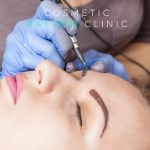
Microblading feels similar to holding a pen, and it’s simple to control, especially for beginners. Artists manually draw strokes, focusing on precision and pressure. On the other hand, the Machine technique requires mastering a moving device. Tattooers must control speed, depth, and pressure, which can be challenging. At the end of the day, practice makes perfect, so exercises like tracing your name repeatedly with the Machine will help develop muscle memory and control.
Essential Skills for Mastering Machine-Based Brow Techniques
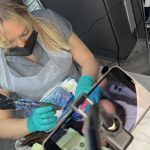
For Machine-based SPMU, artists would need:
- Needle knowledge: Awareness of different types of needles and when to use them is essential for the desired effects.
- Hand-eye coordination: Precise Machine control ensures even, natural-looking strokes or shading.
- Pressure and depth control: Consistency is key to avoiding overworking the skin or creating uneven results.
- Design and mapping: Drawing “skeleton” strokes or outlines before starting helps maintain symmetry and accuracy.
- Tapered strokes: To achieve a lifelike appearance, it’s crucial to begin and finish each stroke softly, emulating the natural flow of hair growth.
Common Challenges When Transitioning to Machine Techniques
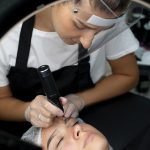
Cosmetic Artists often encounter hurdles when moving from Microblading to Machine techniques:
- Control: Machines are harder to master than Manual tools, requiring time to develop steady hands and confidence.
- Stroke Quality: Getting the same sharp, tapered strokes as Microblading can be difficult at the beginning.
- Needle Selection: Choosing the correct needle and style for the client can be a trial-and-error process and experience.
- Overworking the Skin: Novices can press too hard or overuse the same area of skin, leading to injury and poor healing.
Client Comfort and Aftercare: How Do Machine-Based Techniques Compare?
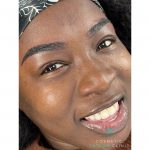
Machine-based Brow techniques are often more comfortable for clients for these 3 reasons:
- Less pain: Due to the speed of the Machine, the slicing can be less painful than with a blade.
- Quicker healing: The less trauma, the quicker you heal with less chance of scarring or pigment loss.
- Streamlined aftercare: Clients usually have less redness and swelling, making the aftercare process simpler and more predictable.
Benefits of Mastering Both Microblading and Machine Techniques for Cosmetic Tattoo Artists
Being skilled in both Microblading and Machine techniques can be advantageous for Cosmetic Tattoo Artists. These skills allow for a range of results, meet various client preferences, and boost adaptability in the industry. It also enables them to cater to a wider variety of clients.
Comprehensive Training in Microblading and Machine Techniques by Cara
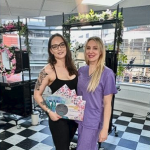
Everything about Microblading and Machine techniques is taught by Cara, founder of Cosmetic Tattoo Clinic, Manchester. Her 2 courses, the Microblading Eyebrow course and the Ultimate Machine SPMU course, cover everything students need to know. She can also address any challenges that trainees have regarding the transition from Microblading to Machine.
Mastering the future of brow artistry requires patience, experience, and the correct training to create new designs and improve customer results.
